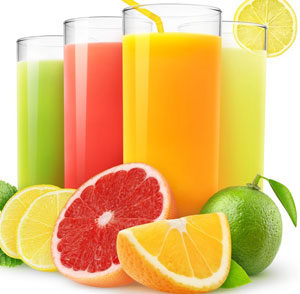Juicing has become very popular. And for very good reasons. What comes to my attention though is that there are different ways to get your juice. You can either get your juice freshly squeezed, can put it in a blender, buy it at the store pasteurized and lately cold-pressed juices have been getting a lot of attention. So, let’s explore each of these.
Juice Freshly Squeezed
Sounds good but if the juice hasn’t been treated in some way there is a chance that there could be bacteria found in the juice. Don’t get to excited though. Most people’s immune system can usually fight back the effects. Enjoy!
Blended Juice
The process of blending is done by putting the whole fruit into a blender. This also gives you the opportunity to add other things to it. Such as vegetables, nuts, seeds or yogurts to increase the amount of healthy proteins and fats you are getting. By the way it’s also a way to add unwanted calories.
Pasteurized Juice
The reason for pasteurization is that the process kills bacteria. This process is complete by heating unpasteurized juice to high temperatures. This kills any bacteria that may be present. The down side is that it can also take away from the nutrients found in these juices. Pasteurized juice is the most common juice you will find in your grocery store and has a high shelf life. “Pasteurization is a process whereby something destined for human consumption (like juice, for example) is brought to a very high temperature for a short period of time, and then immediately cooled down. During this process, chemicals are applied to all produce being used in a juice to ensure bacteria does not form during packaging. This heat is used to eliminate harmful bacteria but also removes several good bacteria’s in the process.”

Cold-Pressed Juice
“Cold-pressed juice is much more expensive to make because it doesn’t use heat. But has significantly more vitamins and enzymes. As a result of zero-heat extraction, ‘cold-pressed’ juice preserves valuable enzymes and vitamins for up to three days, which explains why cold-pressed juices have such a short shelf-life.” Typically speaking, a cold-pressed juice can take anywhere from 12-24 hours from sourcing to juicing to bottle.
Bottom Line
The best way to go with juicing would be to either freshly squeeze it or get it cold-pressed. Pasteurization has its place by taking out the bacteria’s that may or may not affect you. But also know that by putting it through this process it allows for a longer shelf life which stores love. And it can affect the true nutritious value of the juice. And blended juices are great but. If you’re putting it in a blender then you must be mixing it with something so be very aware of what that other “stuff” is and what that is going to do to the calories you are now going to take in.